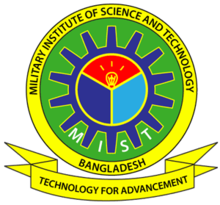Abstract:
The Nikli Haor, encompassing the areas of Nikli, Mithamain, Austagram, and Itna upazilas
in Kishoreganj district, is an extensive wetland. It appears as if numerous small islands and
breathtaking natural formations are scattered across the vast water body, resembling
isolated islets in a colossal watery expanse. During the rainy season, almost all these areas
in the four upazilas of Kishoreganj—Nikli, Mithamain, Austagram, and Itna—are
submerged in water, gradually receding as the rainy season concludes. During this time,
the raised roads constructed for communication across the haor become visible. Previously,
boat communication was prevalent during the rainy season, and people traversed from one
place to another on foot during dry periods. However, times have changed, and with the
development of infrastructure in these upazilas, all-weather roads and semi-metal roads
have been built to facilitate communication. In the dry season, these areas witness rice
cultivation and extensive livestock farming. Nevertheless, at present, the excessive use of
engine-driven boats for transportation and the disposal of waste materials into the water by
boat passengers are causing water pollution. This pollution, along with the impact of
agricultural runoff and changes in the reproductive cycle of aquatic organisms, is adversely
affecting the aquatic ecosystem. This research focuses on proposing a sustainable and
environmentally friendly mode of transportation for travelers in the form of an indigenous
amphibious vessel. The vessel aims to address issues related to the disposal of single-use plastics into the water by promoting the use of reusable and biodegradable plastic products. Additionally, the research suggests the implementation of decentralized wastewater treatment systems, hybrid engine systems, and the utilization of solar panels to reduce carbon dioxide emissions. Efforts are made to purify solid and liquid waste through the use of bio-gas production and bio-slurry treatment tanks. The decentralized wastewater treatment system ensures the use of bacteria-free water for various purposes or can be discharged without causing harm to the environment. The use of organic waste from the vessel in the form of bio-slurry can contribute to the production of bio-gas and serve as a nutrient-rich organic fertilizer, which can be sold for agricultural purposes. The adoption of hybrid engine systems and solar panels helps in reducing carbon dioxide emissions, making the model both environmentally sustainable and economically viable. Marine hybrid electric propulsion systems combine combustion engines with battery power to reduce emissions and optimize engine operation. They are suitable for vessels with varying power demands and flexible operating profiles. The successful implementation of this model not only benefits travelers but also makes the entire transportation system environmentally friendly. With the area's soil remaining unpolluted, dry-season activities such as rice cultivation and livestock rearing can thrive, resulting in economic prosperity. This model serves as an economically viable and environmentally sustainable solution.
